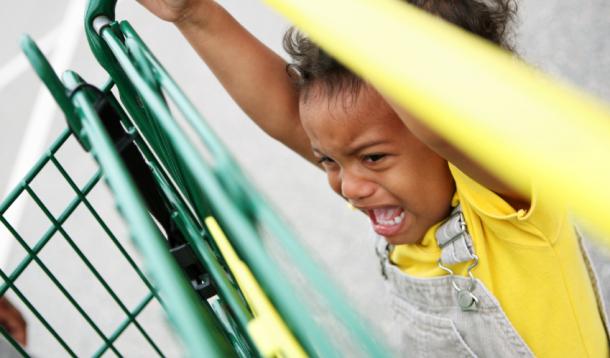
This is the third installment in my "tantrum" series. The first was on questions to consider when your child has lots of tantrums, and the second was how to de-escalate a tantrum.
Once you have done all you can to de-escalate and prevent a tantrum, but your child still breaks into a full-body rager, it is time to go into tantrum tolerance mode. How we respond to our child's anger outbursts does have a big effect on how our children learn to manage big emotions, and the frequency/ duration of the outbursts. *Tantrums are normal. Often, tantrums are sideways communication so considering the questions I posted earlier can be helpful.
The biggest help for your child to manage big emotions is to see how you manage yours, for you to be calm, and for a plan to be in place with steps your child can follow when angry. I call this an "angry plan" and will write about it more in the future. Gordon Neufeld, PhD calls this type of plan, "scripting a tantrum."
So, you've cut the "wrong end of the freezie" (I have!) and your child loses it. Here are some suggestions to getting through your child's rage-time:
If you need to move him to a safe-zone, pick him up from the back so the flailing appendages are in front of you (if he isn't too big to do this). I sometimes would take my kids into the bathroom and sit down on the inside of the door with them. That way, if they suddenly needed to pee, which did happen often, I didn't care if they refused to use the toilet and just peed on the floor.
STOP TALKING and definitely do not yell at a yelling child. This is often the point when parents do things they regret. Collect yourself and do not sever the relationship with your child. You will not teach that child to shift out of yelling into a rational state by yelling too. People who are flooded by intense emotions can't really hear talking so save your breath.
Think about what it is like to be overcome with exhaustion, hopelessness, and pure rage. Have you ever "lost it" or "snapped" even though you didn't want to? That's likely what is happening with your child. Being in a state of feeling for him rather than attack will help both of you get through this. Empathy always wins.
Part of calming down is getting a handle on your self talk. If you are thinking, "I don't have time for this sh*t!" or "I can't handle this! Not again!" your child will feel your upset, which can rev him up. You know that animals can smell fear, well, children can tell when you are in a hurry and their tantrum is a bother. Some children might have tantrums just when you need to leave because they have learned that the chance of you caving to their demand is higher when you're in a rush.
During the time when one of my sons was having five tantrums a day, I actually rescheduled my appointments for a few weeks down the road and gave myself a huge buffer of time to handle the meltdowns if I was going anywhere. My biggest challenge was calming myself down and not blaming him for ruining my day.
I knew there was a problem because this number of intense emotional outbursts was very unusual for him. I made an effort to over-fill his attachment tank — I could see it was low and I was having a hard time connecting with him when our days were filled with so much yelling. When I put my attention on filling his attention tank, and filling my rest tank, the tantrums subsided. Many of the points I am mentioning in this series helped in our situation.
This will allow you to focus on your child's needs and not on the "hairy eyeballs" you are getting from on-lookers. I know, leaving a cart full of unpaid products is hard, but you can always come back to get it after your child is calm.
Stay nearby, and offer a hand on his back to help with the self-regulation process (more about that in the future) but don't try to reason with him. Have a tantrum plan. Do the same thing each time he has a meltdown. I used to sit near my child, fold my legs in half-lotus position (cross them) and breathe very deeply.
You can use a bridging statement — this is where the child knows there is an end to the tantrum and something happens afterward. For example, "When you are done yelling, hugs are waiting for you." Watch for the futility moment and be ready to scoop him up when he gets there, which will create a positive association with allowing himself to feel his deeper emotions. Hugs reinforce that strong emotions are a safe thing, and you are a supportive person.
*Don't try to hug a yelling person. Let the anger shift to the deeper (cake) emotion FIRST.
To be continued...
Please do ask questions here or on my facebook page.